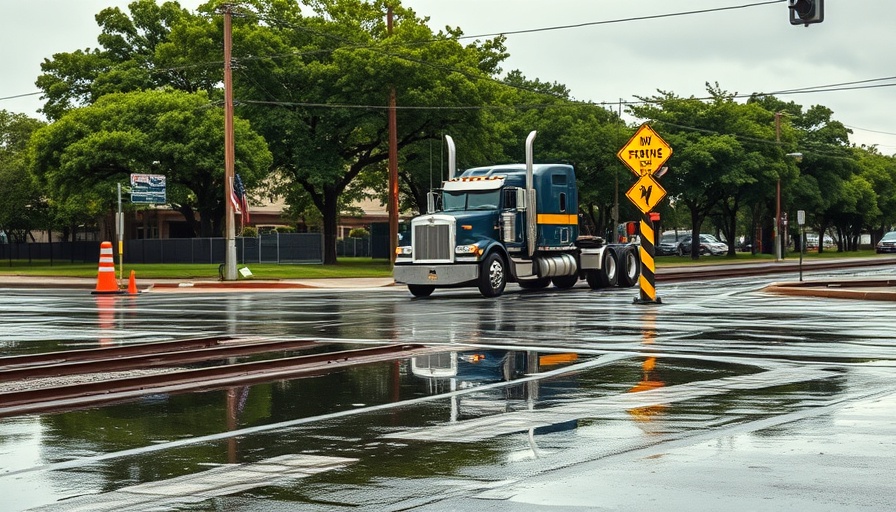
Texas Legislators Take Bold Action for Safer Railroads
In a decisive move towards improving public safety, Governor Greg Abbott has recently signed Senate Bill 1555 into law, marking it as a transformative step in addressing the dangers posed by railroad crossings across Texas. This legislation comes as a direct response to alarming incidents, including the tragic death of Milby High School student Sergio Rodriguez, who lost his life at an unsafe crossing. Advocates claim this bill will significantly reduce the number of pedestrian and vehicular accidents at railroad intersections.
The Scale of Investment in Rail Safety
This new law is poised to bring an unprecedented $250 million in funding specifically earmarked for enhancements at railroad crossings. These improvements aim to optimize safety measures, including better signage, more effective warning systems, and upgrades to crossing infrastructure that will help prevent accidents that have, in the past, devastated families and communities.
Beyond the immediate benefits of improved crossings, Senate Bill 1555 signals a broader legislative commitment to public safety. It aligns with national trends emphasizing the need for improved transportation infrastructure that caters to both pedestrians and vehicles. Railroad crossing safety is part of a larger national narrative that recognizes the crucial role infrastructure plays in daily life and the need for continuous improvement to reduce accidents.
Community Reactions: A Collective Sigh of Relief
Local community leaders have expressed their relief and gratitude towards the passage of this law, underscoring its importance in preventing future tragedies. For many, this signals not just an investment in infrastructure, but a renewed commitment to valuing human life over convenience. The focus now shifts to implementation, with communities eager to see how these funds will be utilized. The consensus among residents is that while this bill is crucial, ongoing education and awareness about crossing safety will also be fundamental in changing behaviors around railroads.
What the Future Holds for Texas Railroads
As the state gears up for tangible changes in crossing safety, experts predict this initiative could set a precedent for similar legislation nationwide. With Texas, a state known for its vast railway system, taking the initiative to address these safety concerns, other regions may follow suit, recognizing the vital importance of protecting their residents along transportation corridors.
Key Safety Features on the Horizon
Among the proposed upgrades are updated warning systems, improved lighting, and enhanced visibility at crossings. Integrating technology such as cameras and sensors may also play a role in these advancements, providing real-time data to help prevent accidents before they happen. The bill emphasizes that these enhancements will directly involve community input, ensuring that local concerns and conditions are adequately addressed.
Final Thoughts: Calling for Community Engagement
The enactment of Senate Bill 1555 demonstrates a crucial shift in Texas public policy, emphasizing the safety of its roads and railways. As residents, it becomes essential to remain engaged during the rollout phase of these initiatives. Keeping track of developments, attending community meetings, and providing feedback can help ensure the measures implemented are effective and tailored to specific local needs. Engaging with local lawmakers to advocate for continuous investment in rail safety and infrastructure should also be prioritized as the state moves forward.
Conclusion: A Step Forward for Texas and Beyond
Senate Bill 1555 is more than just a law; it represents a collective effort to prioritize safety at railroad crossings. With this significant financial backing and community cooperation, Texas is setting standards in rail safety that other states may soon look to emulate. In recognizing the importance of infrastructure improvements, Texans are not just investing in roads and crossings; they're investing in the future of their communities.
 Add Element
Add Element  Add Row
Add Row 



Write A Comment